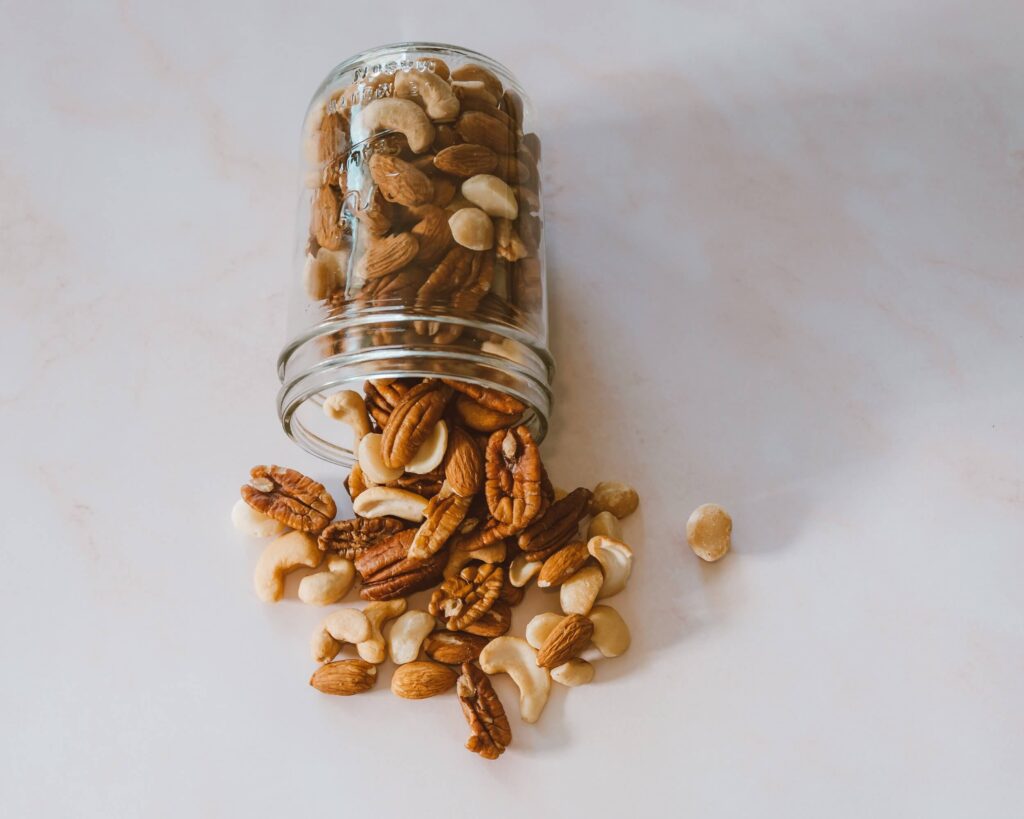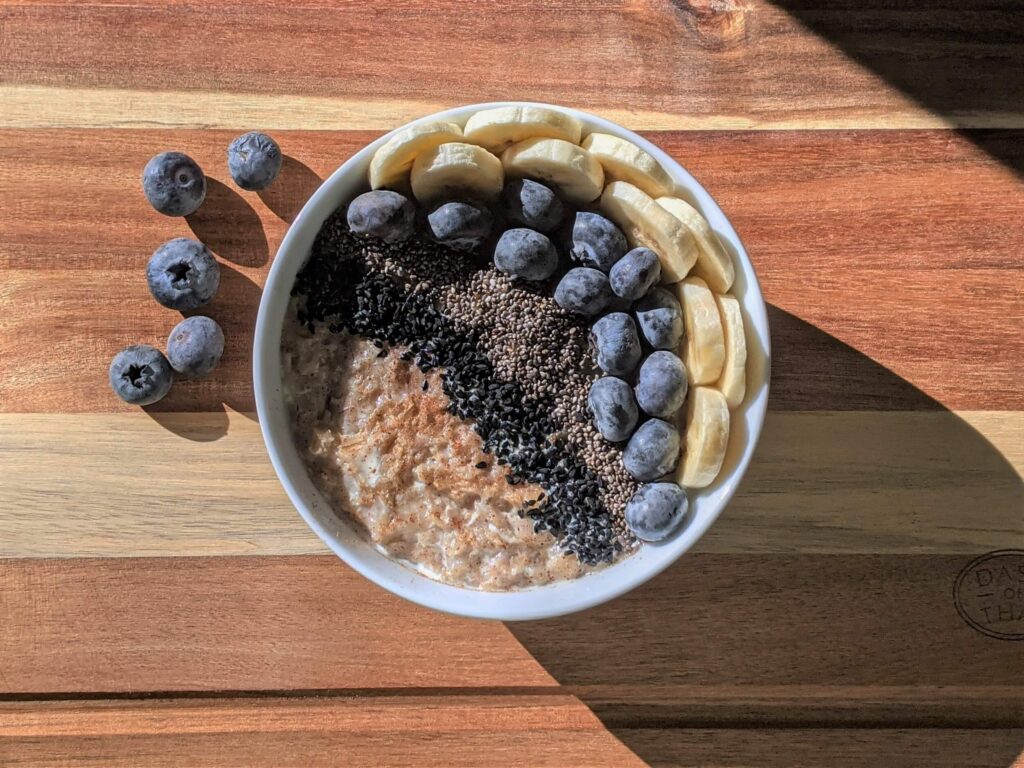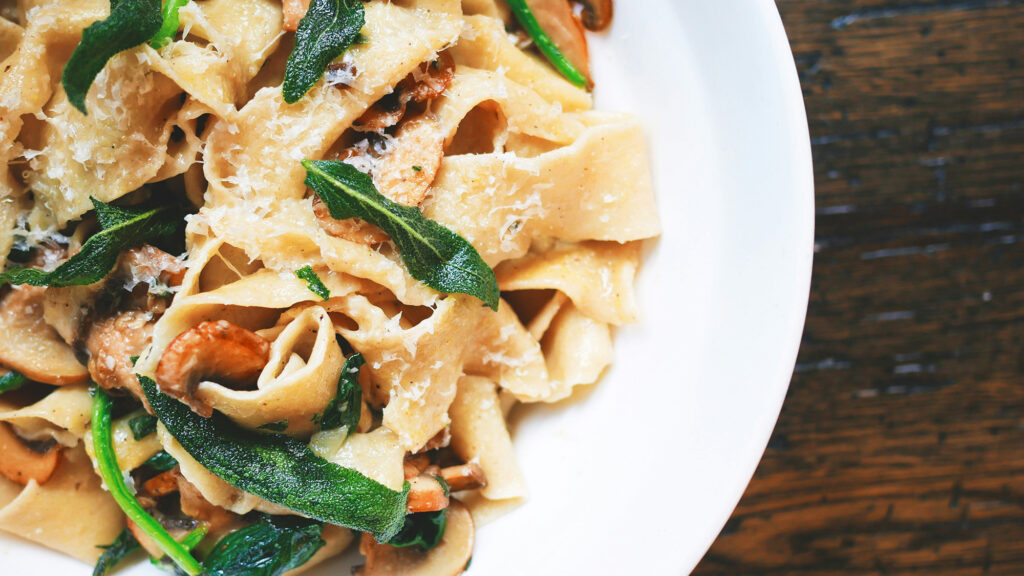Including resistant starch in your diet is a great way to help keep yourself full while eating less food. It also helps speed up weight loss and can act as a prebiotic. The popularity of resistant starch and research around it has been growing in the past decade due to the rise of the obesity epidemic around the world.
To this end, scientists are conducting research pools to understand the way it affects our bodies. Let’s take a deep dive into the benefits and limitations of resistant starch, so you can make a well-informed choice about including it in your diet.

Highlights
- Resistant starch can help with digestion, constipation, and gut health and might even help fight against colon cancer,
- Resistant starch helps us stay more full or satiated due to the body’s inability to completely digest it; this can promote weight loss,
- While the benefits of resistant starch vary from person to person, everyone should consume at least some amount of resistant starch.
What is resistant starch and what are the types of resistant starch?
To put it simply, resistant starch is a kind of carbohydrate that is digested at a slower pace. Most experts recommend cutting down on starchy foods to lose weight and lead a better quality of life, but not all starch is equal.
Resistant starch is a type that breaks down slowly like fibre and can have positive health benefits. All starches are a kind of carbohydrate that breaks down into glucose during digestion. However, the rate at which they are broken down can differ.
Mashed potatoes, for example, break down quickly and instantly release energy, which is good in the short term as it gives your body a nice boost of energy. However, in the long run, it can negatively affect your body. Processed foods or quick digesting carbohydrates can lead to rapid releases of glucose in the body, which can then lead to obesity and type two diabetes.
Resistant starches get their name from their ability to resist digestion. Resistant starches are digested slower due to their molecular composition. They exist both naturally and can be formed by artificial processes as well.
For example, if you let pasta cook, it causes the molecules to stretch and makes it easier to digest. But just as the cooking of pasta causes the molecules to relax, the opposite happens when you let the pasta cool down. The starch molecules pack together, becoming harder to break down and digest.
Let’s look at a few types of resistant starch and how they were formed:
- Natural resistant starch: This consists of nuts, whole grain, seeds, and legumes.
- Starches in raw or unripe foods: This could include raw bananas or raw potatoes.
- Resistant starches created by cooking then cooling: This can include carb-heavy foods like pasta, potatoes, and rice.
- Chemically modified foods: This is found in specially processed and fortified foods and supplements.
How does resistant starch help with weight loss?
Resistant starch is said to contain 2 calories, as compared to 4 calories in regular starch, so eating more resistant starch collates to lesser calories and will thus lead to weight loss.
If you are on a diet, replacing simple starches with resistant starches may help you lose weight. The slower digestion process can make you feel more full, and you’ll end up eating a smaller portion of food, thus contributing to weight loss.
Resistant starch is a prebiotic and thus plays an important role in weight loss as it aids in reducing abdominal fat and improving digestion. Let’s look at some of the foods with the highest levels of resistant starch (per 100g or half cup), which you could consider adding to your diet:
- Beans: 2 to 4g
- Brown rice: 3.5g
- Green bananas: 4.7g
- Lentils: 3.4g
- Muesli cereal: 3.2g
- Oats: 3.6g
- Potatoes: 3.6g
What are the health benefits and limitations of resistant starch?
Resistant starch can be a great addition to your diet, but it could also not suit you personally. First, let’s look at some of the reasons you might want to add resistant starch to your diet.
- Improves insulin sensitivity: The greater your insulin sensitivity, the more effectively your body uses it. This greater insulin sensitivity helps better regulate blood sugar after meals. According to a 2019 study published in Nature, overweight or obese adults who consumed 10-15 grams of resistant starch each day had lower fasting glucose, insulin, and glucose sensitivity. Better insulin sensitivity can help avoid issues like diabetes as the blood sugar is more effectively managed.
- Boosts satiety: Due to its ability to withstand digestion, resistant starch stays in our system for longer, thus keeping us more satiated in the long run. Research shows that eating just 30 grams of resistant starch each day for six weeks helped decrease hunger hormones in overweight adults.
- Stool assistance: Resistant starch can help loosen stool due to its fibre-like consistency. This helps avoid constipation and issues like haemorrhoids.
- Promotes healthy gut bacteria: Resistant starch acts as a prebiotic and helps feed healthy gut bacteria in the colon, which improves our digestion and metabolism. According to one study, eating just 100 grams of resistant starch each day significantly improved the gut microbiome. Research showed that consuming even just 40 grams of resistant starch a day for four weeks decreased levels of bad gut bacteria and helped with abdominal fat loss.
- Helps burn fat: Replacing a portion of carbohydrates in your diet with resistant starch can increase fat burning after a meal by up to 30%, according to a study conducted by researchers at the University of Colorado in 2004. In some animal studies, they also found reduced abdominal fat and quicker fat oxidation.
- May protect against colon cancer: Some studies suggest resistant starch can stop and help block the growth of colon cancer cells. According to a study published in the American Journal of Clinical Nutrition and conducted at the University of Wurzburg’s department of medicine in Germany, resistant starch modified the metabolism of certain bacteria in the colon to help prevent cancer. Another in vitro model study by the Georgia Health University Department of Biochemistry found that butyric acid, which is a compound found due to the breakdown of resistant starch, may reduce inflammation in the colon and block the growth of cancer cells.
After having looked at the benefits of resistant starch, let’s go over some of its limitations:
- Benefits vary: There is no one single resistant starch that will address all issues for all people equally. Some people will see better, more prominent benefits than others. However, resistant starch should still be a part of your long-term diet.
- Discomfort: Foods like cottage cheese, beans, and legumes can cause gas, bloating, and problems with digestion. If the discomfort is too much, then you need to reduce the amount of fibre and resistant starch in your diet.
- Resistant starch supplements are lower in nutrients: Supplements like Hi-maize flour or potato starch tend to have a lower amount of nutrients when compared to natural food. For example, potato starch contains fewer calories than potato but has fewer essential nutrients, vitamins, and minerals.
Conclusion
Resistant starch does offer a lot of benefits. However, consuming too little or too much of it can lead to side effects or drawbacks. The best approach is to start slowly and see what works for you individually. Resistant starch should be consumed by all to a certain extent. However, most people find it difficult to meet their requirements.
Foods such as oats, bananas, konjac noodles, rice, pasta, green banana flour, and potatoes can be added to make sure you get enough resistant starch in your diet. Eating too much at once can cause gastric distress or indigestion, so make sure you consume plenty of water when you decide to start consuming more resistant starch. A good target for an average individual is 15 to 30 grams of resistant starch daily.
Disclaimer: The contents of this article are for general information and educational purposes only. It neither provides any medical advice nor intends to substitute professional medical opinion on the treatment, diagnosis, prevention or alleviation of any disease, disorder or disability. Always consult with your doctor or qualified healthcare professional about your health condition and/or concerns and before undertaking a new health care regimen including making any dietary or lifestyle changes.
References
- https://www.insider.com/guides/health/diet-nutrition/resistant-starch
- https://www.healthline.com/nutrition/resistant-starch-101
- https://www.healthline.com/nutrition/resistant-starch-101#weight-loss
- https://www.allysangels.com.au/the-crucial-role-resistant-starch-plays-in-weight-loss/
- https://www.nature.com/articles/s41387-019-0086-9







